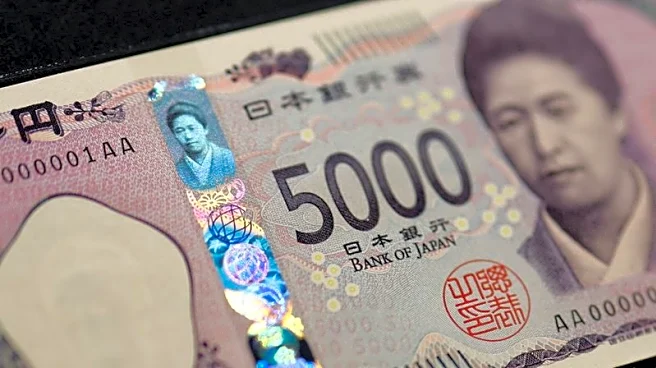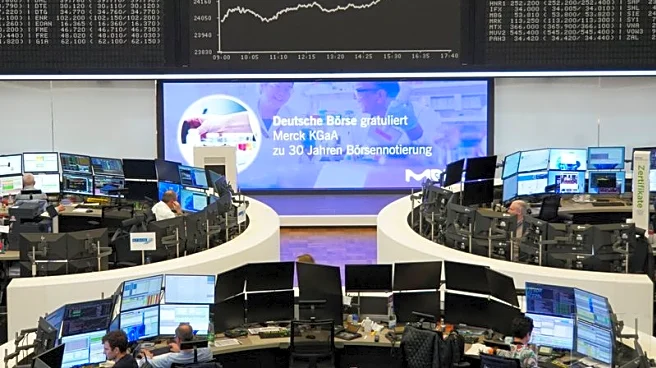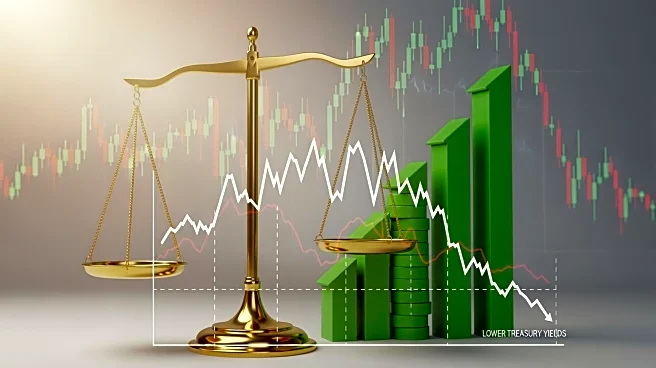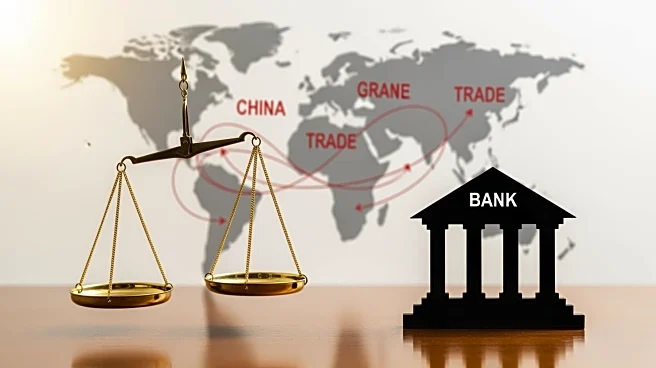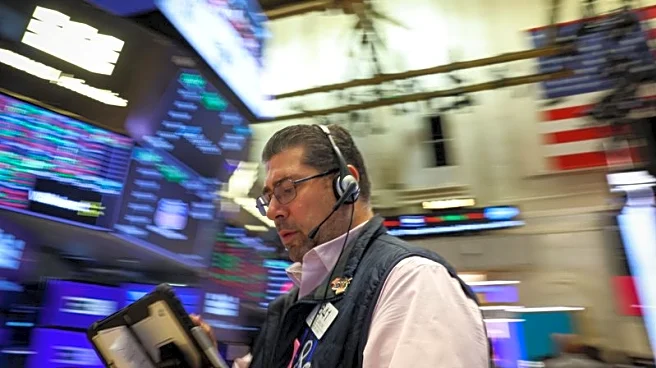What's Happening?
Gold prices have entered a period of significant volatility, with intraday swings reaching several hundred dollars. The week closed with gold prices settling at around $4,250 per ounce, marking a substantial
increase of over 10%. This surge was driven by a combination of factors including tariff tensions between the U.S. and China, a prolonged U.S. government shutdown, and expectations of interest rate cuts by the Federal Reserve. President Trump announced a potential 100% tariff on Chinese imports, which was later partially retracted, contributing to market uncertainty. The ongoing government shutdown has further amplified risk, as vital agencies operate with limited capacity, increasing the demand for safe-haven assets like gold.
Why It's Important?
The volatility in gold prices reflects broader economic and geopolitical uncertainties impacting the U.S. market. The potential for increased tariffs and the prolonged government shutdown pose risks to economic stability, affecting investor confidence and market dynamics. The Federal Reserve's anticipated interest rate cuts could further influence gold prices, as lower rates typically enhance the appeal of non-yielding assets like gold. The situation underscores the interconnectedness of trade policies, government operations, and monetary policy in shaping market trends and investor behavior.
What's Next?
The Federal Reserve is set to meet on October 28-29, where a decision on interest rate cuts is expected. This meeting could significantly impact gold prices, depending on the direction of monetary policy. Additionally, any resolution to the government shutdown or changes in tariff policies could alter the current market dynamics. Investors and policymakers will closely monitor these developments, as they hold the potential to either stabilize or further disrupt the market.
Beyond the Headlines
The current situation highlights the complex interplay between trade relations, government functionality, and monetary policy. The uncertainty surrounding these factors not only affects market prices but also has broader implications for economic growth and stability. The reliance on gold as a safe-haven asset during times of uncertainty reflects deeper concerns about the resilience of economic systems in the face of political and policy-driven challenges.


